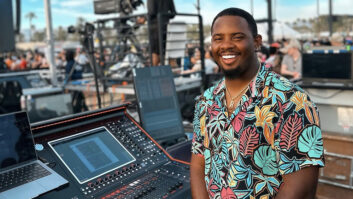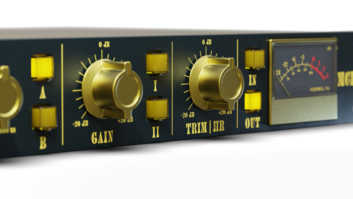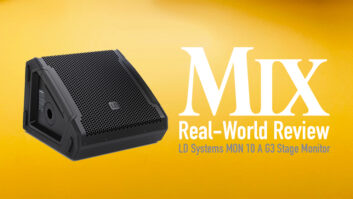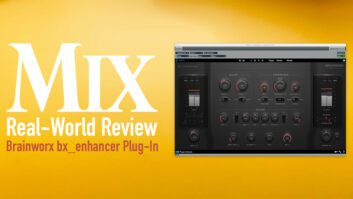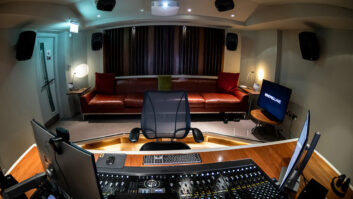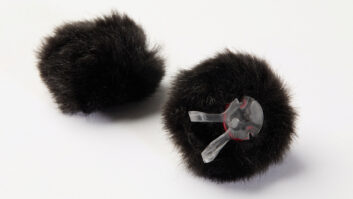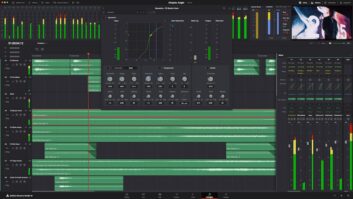Frequency Coordination Group project manager Brooks Schroeder at Lollapalooza 2014.
Orlando, FL (October 16, 2014)—Chicago’s Lollapalooza, one of the year’s top music festivals organized by C3 Presents, hired Frequency Coordination Group (FCG) to coordinate wireless throughout the iconic three-day festival. Since its founding by RF specialist Brooks Schroeder in early 2013, FCG has earned a solid reputation for successfully managing the wireless needs of some of the most challenging installations and events.

“For a big outdoor festival, especially in a place like downtown Chicago, wireless can get out of control in a hurry. That can turn any show into a disaster,” says Brandon Sossamon, C3 Production Manager for Lollapalooza. “We consider having Brooks and Frequency Coordination Group on site to be a necessity.”
The challenge is to ensure that all performers and backstage crews, plus emergency services and the media, each have the wireless channels they need, when they need them. With roughly 150 bands playing eight outdoor stages, all within line of sight of both the Hancock and Willis Towers broadcast antennas, the challenge is considerable. “Those DTV antennas look right down on us. In terms of RF, it’s definitely a high-noise environment,” explained Schroeder.
With an average of 350 active frequencies in Grant Park during show hours, preparation is the key to wireless success. Months in advance, Frequency Coordination Group obtained a Part 15 FCC license for Lollapalooza, which reserves key UHF channels for the festival and affords protection against white space devices. In addition, all bands and media are asked to submit their wireless needs to the Frequency Coordination Group website. Finally, all wireless users, both performers and media, are required to check in with Frequency Coordination Group upon arrival at the festival site.
“We ask them to tell us in advance what systems they’re bringing and how many channels they need, and what date, time, and stage they’re playing,” said Schroeder. “The frequency landscape shifts throughout the day. It’s a constantly moving target, so the more information we have prior to the event, the better our chances of accommodating every request.”
Beyond wireless microphones and in-ear monitors on stage, another critical aspect is coordination of the 2-way radio systems used by crew, media, security, and life safety personnel. “We work closely with the radio vendor, Communications Direct, to make sure everyone is tuned to a clean frequency,” says Schroeder. “It’s just as important for communications to go smoothly backstage as it is for the performers’ gear on stage.”
The local and international media covering the festival also require coordination so that reporters and camera crews don’t interfere with the show. Media members are all assigned specific frequencies. “We physically flag all wandering devices after assigning their frequency,” notes Schroeder. “All the techs know that, if they see an unflagged transmitter, to send that person to us to get properly set up. Every year, it gets easier, because more people know the routine, and they know it’s important.”
Meeting those challenges requires advance preparation, the right equipment and the expertise that comes with experience. At Lollapalooza, Frequency Coordination Group sets up shop in a tent within the media village. There, Schroeder runs the industry-standard IAS intermod software suite from Professional Wireless, while a laboratory grade Rohde & Schwartz analyzer with tracking generator handles critical scanning duties. Each tech in the FCG crew is equipped with a handheld TTI spectrum analyzer along with a frequency counter, which can read the transmission frequency of any adjacent RF device as they move from stage to stage. FCG also brings a wide range of wireless problem-solvers, ranging from antenna combiners and helical antennas to various adapters, low-loss cables, and the like.
“An event like Lollapalooza is always a challenge,” says Schroeder. “Every year, the channel count tends to grow. The big problem this year was that the RF noise floor in Grant Park was about 10 dB hotter than last year. It was definitely our most challenging event here, but overall, it went pretty well.”
Frequency Coordination Group
www.frequencycoordinationgroup.com
